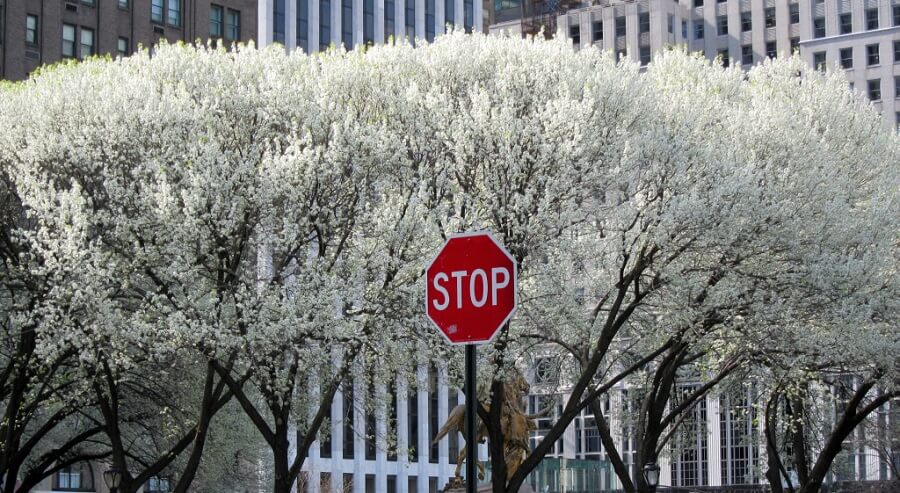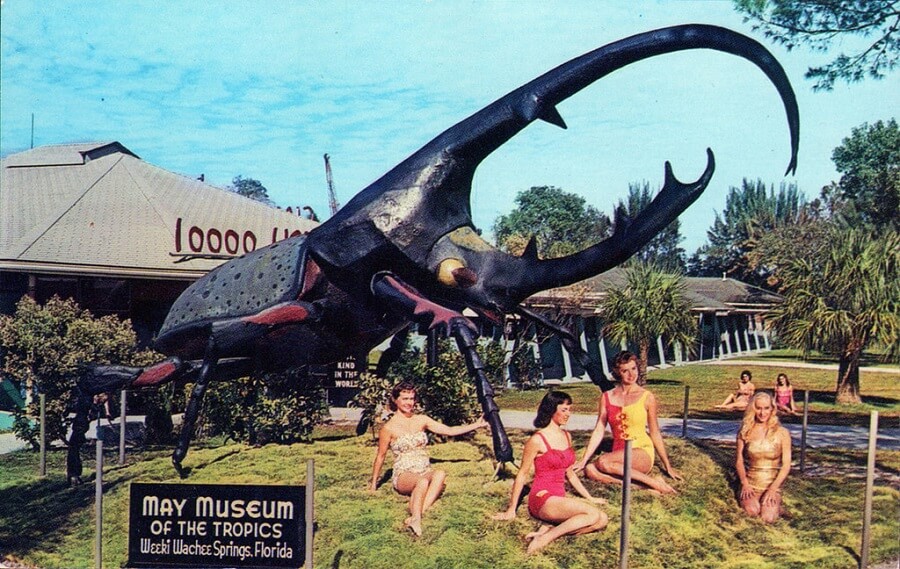Why we hate spring. For the smell of the Callery Pear and the munchies of the carpet beetles
The discontent of winter matters less as the first hint of yellow daffodils, the song of birds, and the sweetness of the air foretell the arrival of spring. Come April, your senses defrost to the sight of the cherry blossoms, the whiff of the white-petaled buds. Or maybe your nose is too crippled by the stench of the Callery Pear and your eyes too watery with the notorious spring allergies to actually embrace the view.
You may not have realized it until spring took its turn on the season calendar, but the much-vilified winter could well have been a blessing in disguise.
The nights stretched into the mornings more, offering the best excuse to hit the snooze button and leave the „rise and shine” for later.
If you lean more on the antisocial side, forget the refuge of your four walls. You snuggled like a happy caveman enough in the cold season. Now you will have to throw those socialite clothes on and go out into the daylight to mingle with folks.
Not to mention all the high-maintenance your body demands all of a sudden, as you shed those warm layers of sweaters and winter socks and expose yourself to the nascent sun rays of May.
Here’s how the plagues of spring blossom in all their might and glory.
April showers bring May flowers. The first will get you wet, the last will give you allergies
The Ginkgo Tree and Callery Pear- The Smells of a Wild Night’s Aftermath

It’s only natural for nature to disperse its fair share of stinky fruits year round. South East Asia gets a whiff of the malodorous durian all the way from Borneo where the king of fruits reigns evil-smelling and supreme. And Hawaii tastes like gasoline in your mouth every time the marang is in bloom, spreading its noxious fumes more profusely than the scorching breaths of the Kilauea.
While the tropics are expected to be exotically obnoxious at times with a few nasty bugs and funky smells, the cities spanning around the Earth’s temperate belt should be a breath of fresh air.
Not so in spring.
Meet Pyrus calleryana. More commonly known as the Callery pear. A deciduous tree common throughout North America, just as Wikipedia points out within the politlcally corect norms. Or, as the more outspoken consensus goes, „The Tree That Smells Like…Well…Um…Semen”.
It blossoms every early spring in five-petaled white sprouts and has strong notes of „used sex rags.” In case your nostrils have been under lockdown every April since you were born, you don’t need the Urban Dictionary to tell you so.
Somewhere between your workplace and the hip lunch canteen around the corner, there’s bound to be a Callery blooming like a bride on her wedding night. Native to Vietnam and China, this particular branch of the pear species was elected the urban tree of choice for American cities beginning in the 1950s.
Michael Dirr, professor of horticulture at the University of Georgia, warned about a spread of „epidemic proportions”. And this time, at least, our senses do not deceive us.
Cornell University recently published a study calling to order the various chemical compounds that make the Bradford pear, a cultivar of the Callery species, to smell like chlorine, decayed flesh, rotten fish or semen, depending on what the nose chooses to interpret.
These volatile amines include dimethylamine and trimethylamine, both derivatives of ammonia of which semen is no stranger. The pear makes use of these exquisite perfumes like pheromones to attract pollinators, such as beetles and other winged insects.
Simply, it’s the smell of love.
And if you haven’t bumped noses with the Callery, you’ve surely caught the scent of the ginko tree. In 2008, Washington Post described the nose-turner in infamous terms.
„The bouquet of a ginkgo tree’s fruit has strong notes of unwashed feet and Diaper Genie, with noticeable hints of spoiled butter.”
The ginkgo has been slapped by the media even more than President Trump, and just like the head of state, the stinky tree, aka the duck’s foot tree or the maidenhair, profited from the unwarranted attention to grow ever stronger roots in the US capital, Washington, DC.
Well, there’s a lesson to be learned on Fleet Street every spring.
The ginkgo tree runs butyric acid through its veins, another chemical mix that smells like delicious vomit and expired parmigiano at the same time.
To eradicate the stench, most US cities employ a chemical called „Shield-3EC 24(C).”, aka the „Shield potato sprout inhibitor”. The point being to inhibit the spread of seeds. But how do you stop a tree that survived the atomic blasts of Hiroshima in 1945?
Allergies out to get you

“In most gardens”, the Tiger-lily said, “they make the beds too soft-so that the flowers are always asleep.”- Alice in Wonderland
If only, somewhere in the real world, the roses and the Tiger-lilies woke up into a talkative mood, the secret of how to beat those spring allergies would come into bloom. Unfortunately, the only statement they’re filling the air with is pollen.
The biggest spring allergy trigger, the tiny invisible beads are being released in sweltering breaths by grasses, trees, and weeds. By means and scope, they stick to absolutely everything- including your hair, your eyelashes, your nasal cavities.
Unless your plan is to test your sensitivities and tickle your body’s defense mechanism into itches, sneezes, runny noses, and coughing, spring is the time for a tailored treatment against the army of allergies.
The 60 million Americans suffering from hay fever (or allergic rhinitis, as known in professional circles) undergo different treatments, some over the counter, others homemade. Below we run over a few tricks and tips:
- Steroid nasal sprays can temper your histamines excitedly charging against the pollen infiltrators.
- Homemade nasal irrigation comprises a mix of warm water, half a teaspoon of baking soda and the same quantity of salt. You can inhale the concoction through a squeeze bottle or a neti pot.
- When it reaches pollen peak season or time of day (usually in the mornings), seal your home. Keep the windows and doors closed and use a cleansed air purifier instead.
- As mentioned before, the pollen likes to be clingy. It will stick to your hair, eyelashes, and clothes. Make sure you clean yourself thoroughly to get rid of the allergen.
Crawlies and buzzies resurrected

All the scavengers rush into spring like it’s their personal playground, from the Siberian foxes digging beneath the melting snow for thawing carcases to the creepy, crawling, flying beetles that overwintered in the attic and now can’t wait to feed on your carpet and buzz into your ears.
Say beetlejuice three times. The undead insects will rise and shine to life! Carpet beetles, boxelder beetles, lady beetles, and other pests of the same genetic soup will zzz… their way into your bed sheets.
Some are bitey on the skin (mosquitoes, wasps, and ticks) while others like to munch on crops and gardens (think grasshoppers, elm bark beetles, and wheat stem sawflies).
But to consider them a mere nuisance is the height of narcissism. For the critters, the salamanders, the frogs, and the bees emerge en masse and migrate to the human-inhabited suburbs for one reason only. And it’s not to ruin your 1st of May barbecue. They simply answer nature’s call.
All those winter nights, the salamanders have been contemplating the ideal future mate. It’s what kept them going through the painful process of freezing their tails off (literally) while maintaining a sparse diet of flies and snowflakes.
The long hibernation period is followed by a long trek down into the warm wetlands in search of a suitable mate. So what attracts male mosquitoes is not the whiff of human blood but the vibrant calls of the Aedes Aegypti ladies.
Come what May, spring may bring an army of discomforts but don’t worry. You won’t be pushing up the daisies until summer.